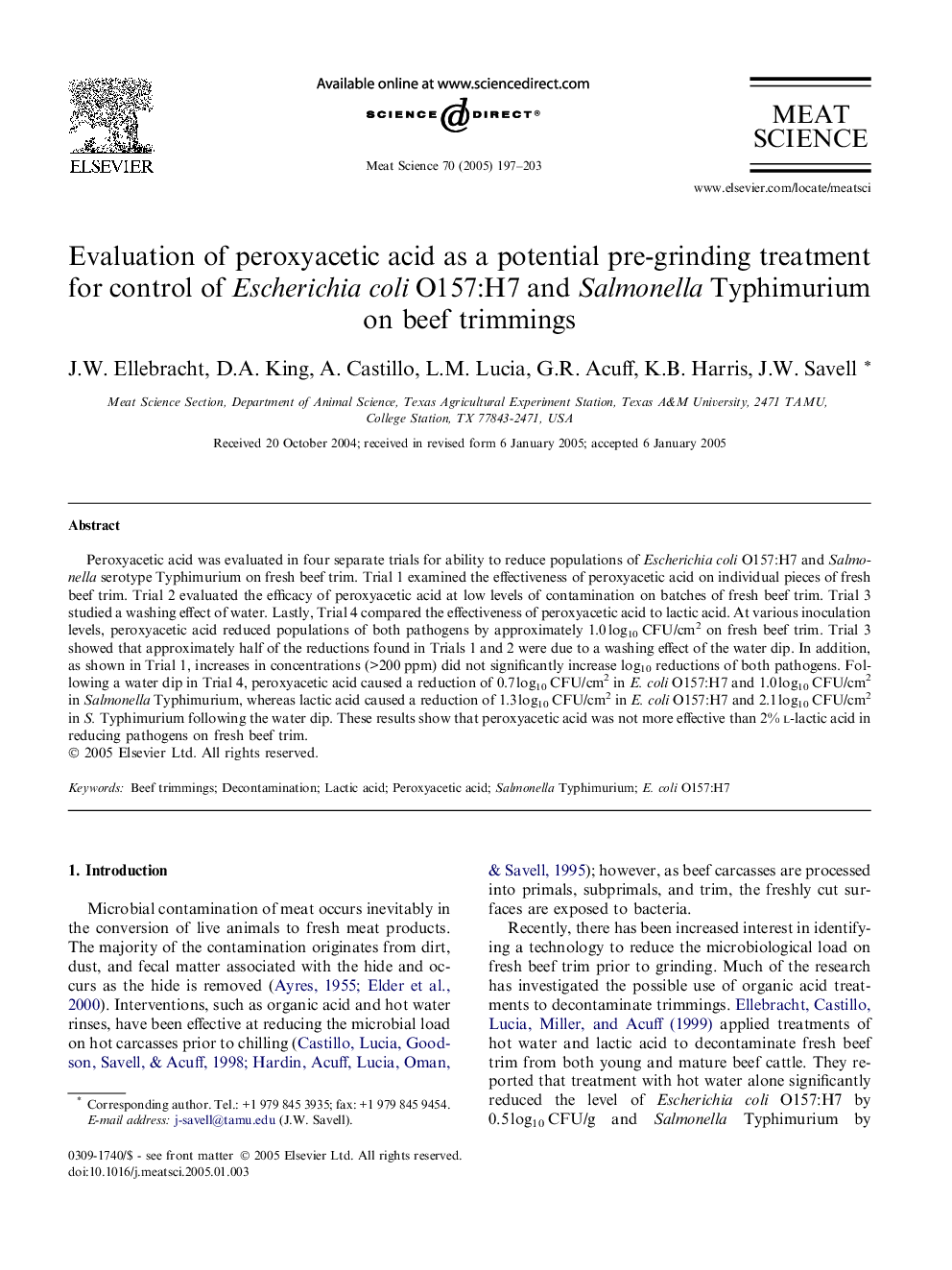| Article ID | Journal | Published Year | Pages | File Type |
|---|---|---|---|---|
| 8983669 | Meat Science | 2005 | 7 Pages |
Abstract
Peroxyacetic acid was evaluated in four separate trials for ability to reduce populations of Escherichia coli O157:H7 and Salmonella serotype Typhimurium on fresh beef trim. Trial 1 examined the effectiveness of peroxyacetic acid on individual pieces of fresh beef trim. Trial 2 evaluated the efficacy of peroxyacetic acid at low levels of contamination on batches of fresh beef trim. Trial 3 studied a washing effect of water. Lastly, Trial 4 compared the effectiveness of peroxyacetic acid to lactic acid. At various inoculation levels, peroxyacetic acid reduced populations of both pathogens by approximately 1.0Â log10Â CFU/cm2 on fresh beef trim. Trial 3 showed that approximately half of the reductions found in Trials 1 and 2 were due to a washing effect of the water dip. In addition, as shown in Trial 1, increases in concentrations (>200Â ppm) did not significantly increase log10 reductions of both pathogens. Following a water dip in Trial 4, peroxyacetic acid caused a reduction of 0.7Â log10Â CFU/cm2 in E. coli O157:H7 and 1.0Â log10Â CFU/cm2 in Salmonella Typhimurium, whereas lactic acid caused a reduction of 1.3Â log10Â CFU/cm2 in E. coli O157:H7 and 2.1Â log10Â CFU/cm2 in S. Typhimurium following the water dip. These results show that peroxyacetic acid was not more effective than 2% l-lactic acid in reducing pathogens on fresh beef trim.
Related Topics
Life Sciences
Agricultural and Biological Sciences
Food Science
Authors
J.W. Ellebracht, D.A. King, A. Castillo, L.M. Lucia, G.R. Acuff, K.B. Harris, J.W. Savell,
